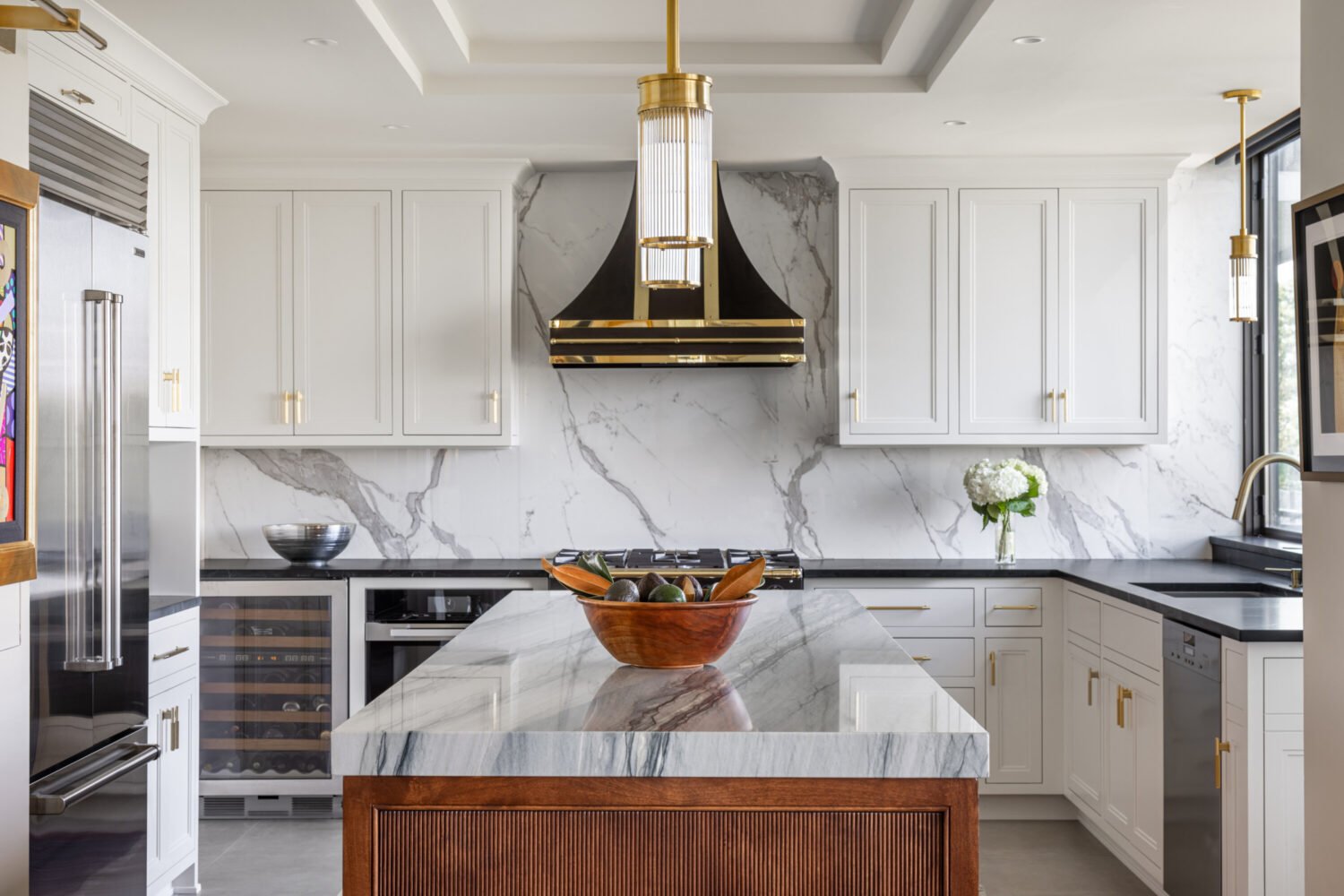By Brian Patterson, Chef Instructor and Director of Culinary Programs at L’Academie de Cuisine
To put on an apron properly takes years of practice.
Wrapping the ribbon-like strings around the small of your back and cinching the ends up in a tight bow just under your belly makes you stand up straighter and supports your back for the long hours to come.
When you fold the edge of the apron down over the knot and tuck in the loose ends, you avoid snagging your apron strings on stove knobs and sharp corners as you maneuver through the kitchen.
Your apron not only protects you from the elements of cooking, it reveals how you have worked at the end of the day: where you have put your hands, what you have spilled. Tying on the apron is a ritual that gives you pause to consider the tasks before you. It is an outward reflection of your determination, your dignity, your approach to excellence.
I know this because I learned it from Francois Dionot at L’Academie de Cuisine more than 30 years ago.
The idea of L’Academie de Cuisine—to promote excellence in the Culinary Arts—was born out of Chef Francois’s realization that to experience excellence is to teach excellence. As a student at the venerable Ecole de Lausanne, Chef Francois realized that being a good cook was all about competently taking direction and constantly refining oneself. But it was the guy in the big hat with the medals, the one giving the orders—the Chef—that most fascinated him. Chef Francois realized he preferred to give the orders rather than to take them. To lead in the kitchen is to teach, and to be a chef is to constantly teach cooks the classics, the fundamentals.
Over many years and in the kitchens of many chefs, Chef Francois developed a talent for teaching people how to cook. And so with a terrific wife and a couple thousand bucks, in 1976 Francois made the leap, opening L’Academie de Cuisine in Bethesda, Md.
Sure, Francois was promoting culinary excellence among gourmands and gourmets, but his original intent was always to build an Academy for professionals: to attract the student with true potential, to train the next generation of chefs.
Francois launched his first accredited professional cooking class in Bethesda in 1983 and expanded the professional division in 1993 to a campus of gleaming kitchens and classrooms in Gaithersburg, Md. With a team of talented instructors and staff, Chef Francois built L’Academie into one the top culinary and pastry schools in the United States. To this day, the brand of L’Academie de Cuisine is synonymous with classical culinary and pastry training.
L’Academie now permeates the culinary community – both regionally in Washington, DC and across the globe. Alumni include Carla Hall, Aaron Silverman, Nick Stefanelli, Angela Pinkerton, Jeff Heineman, Aggie Chin, and Katsuya Fukushima – some of the most highly regarded chefs on the national scene.
The brand on our students’ chef coats is recognized across the country. It signifies that its bearer not only has learned the basics, but is also capable of learning anything in the kitchen, quickly.
Now, more than 40 years later, I have the opportunity to serve as the Culinary Director of L’Academie de Cuisine. Following in the steps of Chef Francois, I now teach the new recruits.
It is with great reverence and pride that I represent the ongoing mission of L’Academie de Cuisine—to promote excellence in the culinary arts. I think about that every morning at 6:15 when students are scrambling, and I tighten up the strings of my crisp, clean apron, hone my knives, tighten my neckerchief, confer with somebody smarter than I am, write the menu on the board with a squeaky dry erase marker, and face the day.







